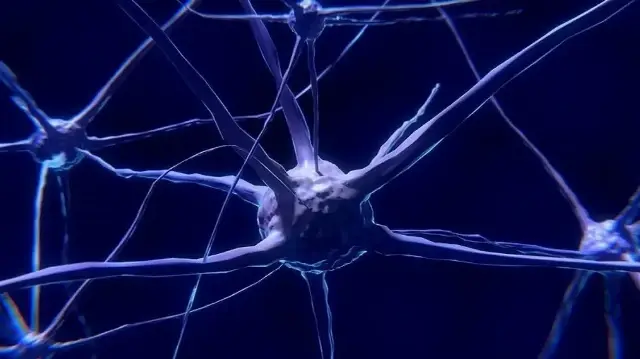Scientists investigate how living cells could become 'biocomputers'

'When you start to say, “I am going to use a neuron like a little machine,” it gives you a different view of our own brain and makes you question what we are,' researcher says
Swiss scientists are attempting to produce a biocomputer from living cells, an idea that dates to science fiction, the BBC reported Saturday.
Reklam yükleniyor...
Reklam yükleniyor...
According to the report, scientists are working toward creating data centers filled with living servers that replicate artificial intelligence while consuming far less energy. The efforts are paving the way for what researchers call “wetware,” a new component in the computing world alongside software and hardware.
One of the pioneers of the vision is Fred Jordan, co-founder of the FinalSpark laboratory, which leads research in the sector.
“When you start to say, ‘I am going to use a neuron like a little machine,’ it gives you a different view of our own brain and makes you question what we are,” said Jordan.
He acknowledges that the idea of “biocomputers” may seem strange to many, stressing that at its core it remains a concept born of science fiction.
- Turning human cells into organoids for biocomputing
Obtaining stem cells from human skin cells represents a first step toward FinalSpark’s larger goal of triggering learning in the biocomputer’s neurons so they can eventually carry out tasks, said the report.
Skin cells sourced from certified providers are cultured into living stem cells, which are then developed into tiny lab-grown brain-like spheres known as “organoids.” Researchers emphasize that while organoids are far less complex than the human brain, they share the same fundamental building blocks.
After a process that can take several months, the organoids are connected to electrodes and asked to respond to simple keyboard commands. When an organoid receives an electrical signal, a small spike of activity appears on a moving graph, resembling an EEG trace on a computer screen. In that way, the transmission and reception of electrical signals can be verified, with results recorded on the computer.
By tracking electrical stimulation and addressing unanswered questions, the aim is to advance the learning capacity and command-response systems of the living cell-based computers.
“For AI, it’s always the same thing,” Jordan explained. “You give some input, you want some output that is used. For instance, you give a picture of a cat, you want the output to say if it’s a cat.”
- Survival problem of biocomputers
As stated in the report, one of the biggest unanswered questions for biocomputers is what their source of energy will be. While an ordinary computer can simply be kept running with a power supply, the case is entirely different for biocomputers, which lack even the blood vessels needed to nourish themselves.
“We don’t yet know how to make them properly. So this is the biggest ongoing challenge,” said Simon Schultz, professor of neurotechnology and director of the Center for Neurotechnology at Imperial College London.
But thanks to FinalSpark’s work over the past four years, organoids can now be sustained for up to four months, said the report.
- Similar efforts underway worldwide
The report highlights that alongside FinalSpark, several other laboratories are pursuing similar efforts in this field.
For example, in 2022, the Australian company, Cortical Labs, announced that it produced artificial neurons capable of playing a computer game.
Meanwhile, researchers at Johns Hopkins University in the US are working to build “mini brains” to shed light on how information is processed, to develop drugs for conditions such as Alzheimer’s and autism.
Lena Smirnova, who leads the research, said that “wetware” is still in its early stages and the likelihood of it replacing the main material used in computer chips is currently very low.
“Biocomputing should complement — not replace — silicon AI, while also advancing disease modeling and reducing animal use,” she explained.
The report notes that artificial intelligence may soon play a role in accelerating such efforts.
Reklam yükleniyor...
Reklam yükleniyor...







Comments you share on our site are a valuable resource for other users. Please be respectful of different opinions and other users. Avoid using rude, aggressive, derogatory, or discriminatory language.